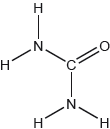| Date | May 2021 | Marks available | 1 | Reference code | 21M.2.sl.TZ1.2 |
| Level | SL | Paper | 2 | Time zone | TZ1 |
| Command term | Predict | Question number | 2 | Adapted from | N/A |
Question
Iron (II) sulfide reacts with hydrochloric acid to form hydrogen sulfide, H2S.
In aqueous solution, hydrogen sulfide acts as an acid.
Draw the Lewis (electron dot) structure of hydrogen sulfide.
Predict the shape of the hydrogen sulfide molecule.
State the formula of its conjugate base.
Saturated aqueous hydrogen sulfide has a concentration of 0.10 mol dm−3 and a pH of 4.0. Demonstrate whether it is a strong or weak acid.
Calculate the hydroxide ion concentration in saturated aqueous hydrogen sulfide.
A gaseous sample of nitrogen, contaminated only with hydrogen sulfide, was reacted with excess sodium hydroxide solution at constant temperature. The volume of the gas changed from 550 cm3 to 525 cm3.
Determine the mole percentage of hydrogen sulfide in the sample, stating one assumption you made.
Markscheme
OR
✔
Accept any combination of lines, dots or crosses to represent electrons.
bent/non-linear/angular/v-shaped✔
HS− ✔
weak AND strong acid of this concentration/[H+] = 0.1 mol dm−3 would have pH = 1
OR
weak AND [H+] = 10−4 < 0.1 «therefore only fraction of acid dissociated» ✔
10−10 «mol dm−3» ✔
Mole percentage H2S:
volume of H2S = «550 − 525 = » 25 «cm3» ✔
mol % H2S = « = » 4.5 «%» ✔
Award [2] for correct final answer of 4.5 «%»
Assumption:
«both» gases behave as ideal gases ✔
Accept “volume of gas mol of gas”.
Accept “reaction goes to completion”.
Accept “nitrogen is insoluble/does not react with NaOH/only H2S reacts with NaOH”.








